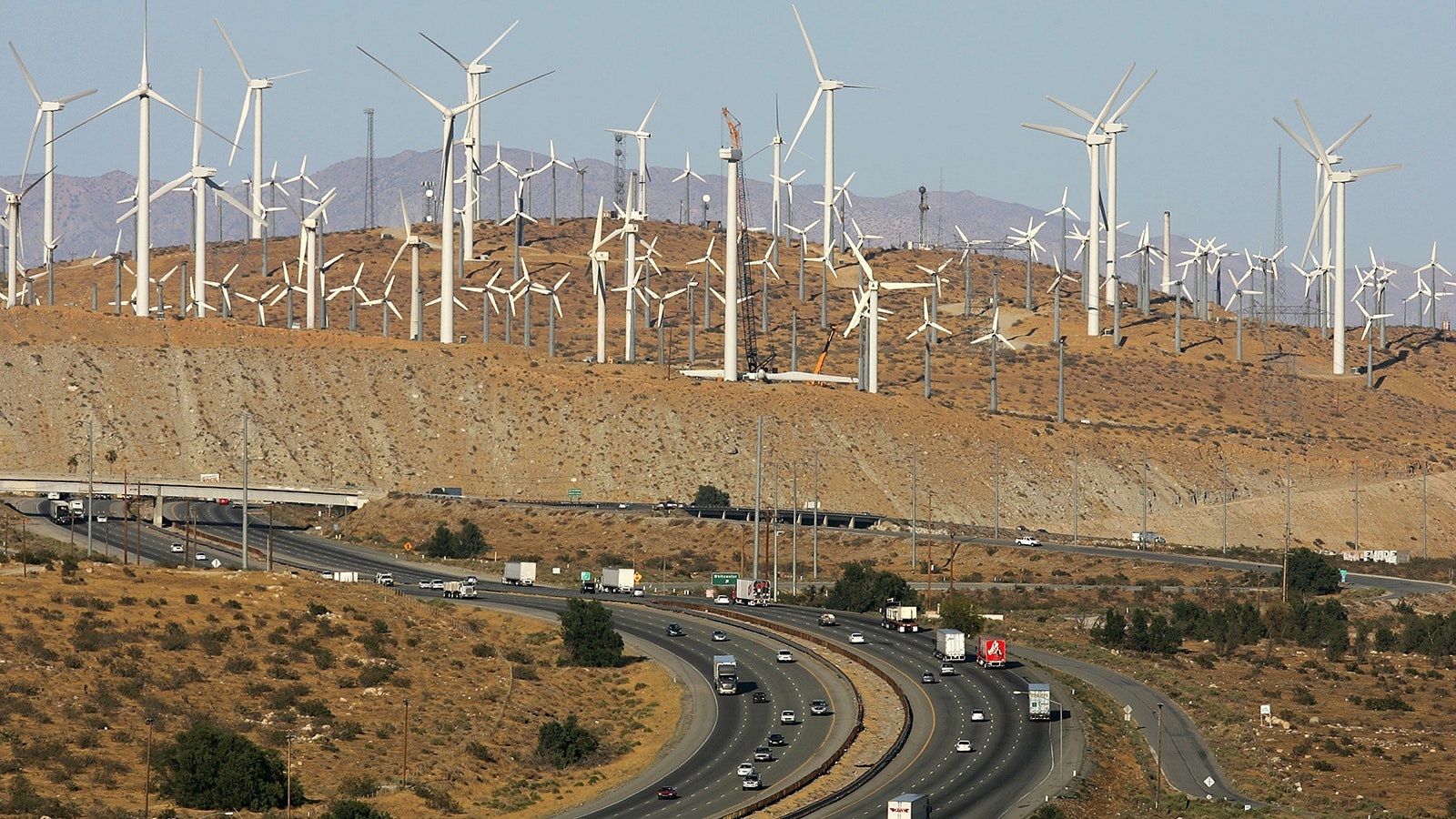The president and CEO of Rocky Mountain Power explained to the Joint Corporations Committee on Wednesday the company’s reasoning for the nearly 30% rate increase it’s asking the Wyoming Public Service Commission to approve.
The request has set off a wave of complaints in listening sessions the PSC is holding across the state as residents, business owners and industry representatives express their concerns about the detrimental impact the rate increase would have if approved.
The utility has been criticized for its renewable energy investments, but CEO Gary Hoogeveen told the committee that the rate increase would have been even higher if the company hadn’t put so much investment in building out its wind portfolio.
Wind farms receive generous subsidies from the federal government in the form of production tax credits, and Wyoming would have missed out on those were it not for the utility’s wind investments, he said.
Great Error
Sen. Bill Landen, R-Casper, said that one of the biggest misperceptions that people in Wyoming have about the rate hike is that the PSC will definitely grant Rocky Mountain Power its request. As a regulated industry, he said, that’s not the case.
Sen. Cale Case, R-Lander, said that the PSC won’t just throw the request out. The company has to be able to run its business profitably.
He said that underfunding utilities can ultimately hurt consumers. He’s seen that happen in other countries where utilities are starved for capital.
“They can’t maintain that high level of service,” Case said.
He warned that it would be a “great error” to think that the PSC can just deny the request altogether.
Entirely Passthrough
Case, who runs a consulting firm specializing in public utility, energy, regulatory and resource economics, presented the formula on the annual revenue requirements that utilities are entitled to receive for a return on their investment.
This is something the courts have decided, he explained, and it’s not something the Legislature or the PSC can suspend.
The formula factors in the utility’s valuation of assets, depreciation and annual expenses, among other things.
Hoogeveen said that within that formula, 95% of the rate increase is driven by the annual expenses the utility has incurred.
To illustrate this, he used the analogy of a gas station. RMP in this example is the gas station owner who provides gas for customers at $3 per gallon. Then, the wholesale price of gas goes up $1 per gallon, so the gas station needs to charge $4 per gallon.
“I make no money on that gasoline. That is entirely passthrough,” Hoogeveen said.
He said this is basically what happened with Rocky Mountain Power. The cost of natural gas and coal have gone up, and so the cost of providing service to customers has gone up.
All Of The Above
Hoogeveen said that the company is committed to following Gov. Mark Gordon’s and the Legislature’s “all-of-the-above” strategy with energy, which means including wind and solar resources along with traditional sources of power: coal, natural gas and hydroelectric.
He said the company is also supporting the development of an advanced nuclear reactor in Kemmerer.
He said that it’s also worked hard to resist pressure from the EPA to shut down coal plants and successfully fought to take Wyoming out of a regulation that would have impacted the state’s coal operations.
RMP also worked with state agencies and the EPA to avoid a shut down of the Jim Bridger Power Plant by converting two of its four units to natural gas, which Hoogeveen called “a very good win for Wyoming.”
To comply with EPA regional haze requirements, the company is converting three of the units at the Naughton Power Plant over to natural gas.
Hot Topic
In addition, RMP is investing in renewable energy, Hoogeveen said.
“I know that’s a bit of a hot topic these days,” he said.
He said that nothing about the increase is due to renewable energy. He said as a result of the company's use of wind, it has been able to save $85 million in costs as a result of federal subsidies.
Rep. Denton Knapp, R-Gillette, suggested that the gasoline station analogy Hoogeveen presented should have included a scenario where the EPA shuts down some of the pumps.
Knapp also asked what the costs of wind power would be if the federal government wasn’t subsidizing it.
The figure Hoogeveen provided would put it at potentially more than the cost of natural gas per megawatt.
“I want to be clear that I don’t feel bad, I’m not embarrassed about taking advantage of federal subsidies on behalf of my customers,” Hoogeveen said.
These credits, he said, are passed through the company to customers. Rocky Mountain Power doesn’t make anything off of them. It only lowers costs to provide power.
“Politically, I don’t have a comment. If you want to say we shouldn’t be subsidizing those, that is your job,” he said.
New Normal?
Rep. Jared Olsen, R-Cheyenne, asked Hoogeveen if the rising cost of fuels was part of the typical ebb and flow of commodities, or are they a new normal?
Hoogeveen said that with pressure to shut down coal-fired power, there’s very little investment in coal. So, mines are trying to extract as much value from the resource while they can.
He said natural gas pipelines can’t be built anymore, so it’s very difficult to increase the supply that would bring down prices.
“If I had to guess, I'm saying costs are going to stay high, maybe moderate a bit, but probably not,” Hoogeveeen said.





